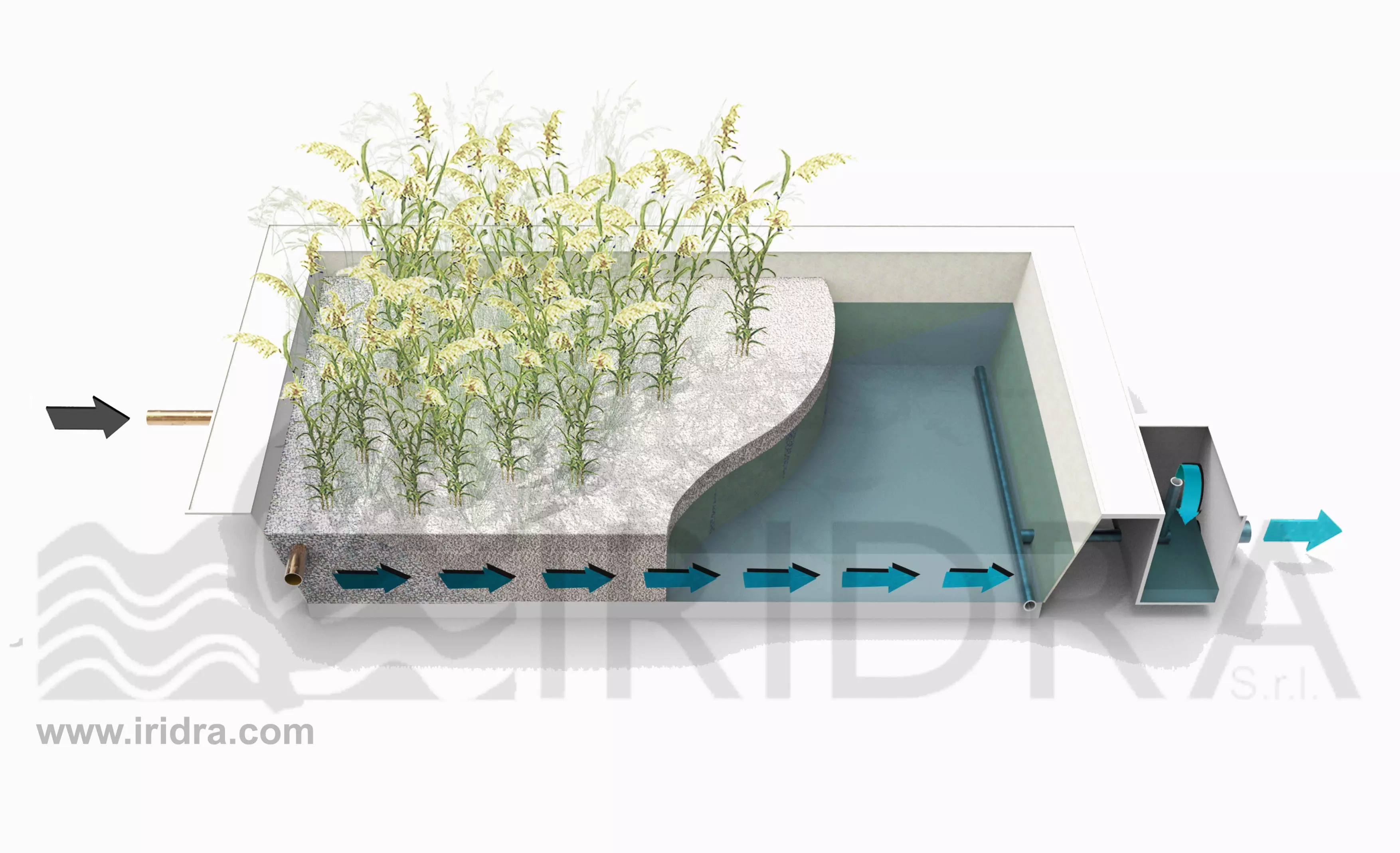Horizontal subsurface flow systems (HF)
Horizontal subsurface flow constructed wetland (HF or SFS-h) is composed of one or more beds, filled with proper inert material, and with a subsurface horizontal flow below the surface. HF maintains continuous saturated conditions and is planted with emergent aquatic macrophytes.
Nowadays, HF is the most used technique in Italy for small installations, due to its extremely simple functioning and the well-proofeed removal efficiencies for domestic wastewater.

SFS-h or HF systems (submerged horizontal flow) consist in basins containing inert material with selected granulometry with the aim to assure an adequate hydraulic conductivity (filling media mostly used are sand and gravel); these inert materials represent the support for the growth of the roots of emerging plants (generally plants are Phragmites australis); the bottom of the basins has to be correctly waterproofed using a layer of clay, possibly available on site and under adequate hydrogeological conditions, or, as more often happens, using synthetic membranes (HDPE or LDPE 2 mm thick); the water flow remains always under the surface of the absorbing basin and it flows horizontally thanks to a low bottom slope (about 1%) obtained with a sand layer under the waterproof layer.

Example of HF system during the planting phase (Preganziol, TV; designed by IRIDRA)
Removal processes
During the passage of wastewater between the rhizosphere of the macrophytes: (i) organic matter is decomposed by microbial activity; (ii) if a sufficient organic content is present, nitrogen is denitrified; (iii) phosphorus and heavy metals are fixed by adsorption on the filling medium. Vegetation's contributes to the depurative process can be represented both by the development of an efficient microbial aerobic population in the rhizosphere and by the action of pumping atmospheric oxygen from the emerged part to the roots and so to the underlying bed portion. Particularly, the oxygen transfer oxidate the wastewater and create an alternation of aerobic, anoxic and anaerobic zones. Consequently, different specialized families of microorganisms are formed and an almost total disappearance of pathogens is obtained. Submerged flow systems assure good thermal protection of the wastewater during winter, especially when frequent periods of snow are prevented.
Removal efficiencies
High removal efficiencies are obtained in terms of organic, suspended solids, and pathogen contaminants. Nitrification is limited by prevalent anoxic-anaerobic conditions, which, on the other hands, favour denitrification.
| Pollutant | Concentration IN (mg/l) | Concentration OUT (mg/l) | n° HF WWTP | Removal efficiencies (%) |
| BOD5 | 178 | 32 | 261 | 80.7 |
| COD | 287 | 76 | 224 | 63.2 |
| TSS | 113 | 22.3 | 319 | 68.1 |
| TKN | 49,8 | 26.2 | 104 | 41.5 |
| Ptot | 8.7 | 4.4 | 247 | 40.9 |
Rese di rimozione di sistemi HF in Europa che trattano reflui domestici e urbani (Vymazal et al., 2008)

